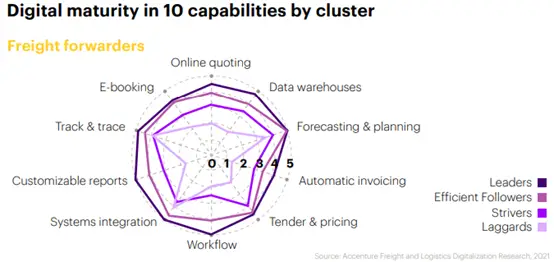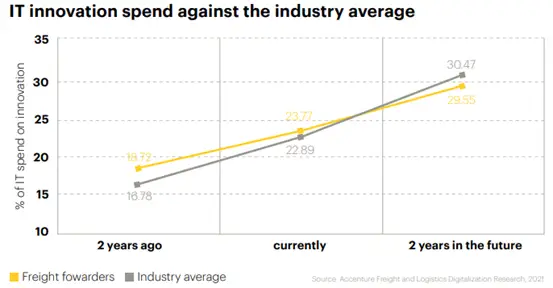
In an era defined by rapid technological advancements, the logistics and freight forwarding industry is undergoing a transformative journey towards digitalization. As businesses around the globe adapt to the changing landscape, it becomes crucial for stakeholders to stay informed about the latest trends shaping the digital freight forwarding sector. In this article, we explore key insights and predictions for the future of logistics by the trends in digital freight forwarding.
In recent years, the global expansion of e-commerce has been a driving force behind the evolution of the digital freight forwarding landscape. Forbes has estimated for the global e-commerce market to reach a total of USD 6.3 Trillion by the end of 2023, and expect the market to grow to a total of over USD 8.1 trillion by 2026. With this market expansion, there is a need for scalable and efficient solutions to handle the surge in cross-border shipments. Businesses are urged to invest in digital freight forwarding platforms that can seamlessly manage the complexities of both domestic and international e-commerce logistics, ensuring timely deliveries and customer satisfaction.
The Direct-to-Consumer (D2C) industry is gaining momentum, with brands opting to sell directly to customers. It refers to a manufacturer directly selling their product to the customer without any intermediaries, for example by utilizing E-Commerce. This shift is altering supply chain dynamics, digital freight forwarders need to adapt to accommodate the unique requirements of D2C operations. With this dynamic industry condition where approximately more than 64 percent of consumers worldwide made regular purchases directly from brands, businesses should leverage their technology to create flexible and transparent supply chains capable of meeting the demands of the evolving D2C market.
The logistics industry is experiencing a surge in competition, driven by the growing demand for streamlined logistics solutions. The need for businesses to differentiate themselves by adopting innovative technologies such as automation, artificial intelligence, and data analytics. Staying competitive in the digital era requires a commitment to continuous improvement and the adoption of cutting-edge tools that enhance efficiency and reduce operational costs. Some of the recommended digital freight forwarder in Indonesia are forwarder.ai, Andalin, & Deliveree


Challenges in transportation infrastructure and rising logistics costs are critical factors for businesses to consider for digital freight forwarders. These challenges act as potential roadblocks to seamless operations. To overcome these hurdles, businesses should invest in data-driven decision-making processes, optimize supply chain routes, and explore cost-effective technologies which digital freight forwarders are able to provide. Additionally, collaboration with logistics partners and adopting sustainable practices can contribute to overcoming infrastructure challenges and managing costs effectively.
The trends in digital freight forwarding outlined above provide a roadmap for businesses looking to prepare for the future of logistics. Embracing these trends, including the global expansion of e-commerce, the emergence of D2C operations, addressing increasing competition, and mitigating challenges in infrastructure and costs, will empower companies to thrive in the evolving landscape of digital logistics. By staying agile, leveraging technology, and adapting to industry shifts, digital freight forwarders can position themselves as leaders in the transformative era of logistics.
Booking, cek harga, pilih rute, dan tracking barang, semua bisa kamu lakukan lewat
forwarder.ai.
Nggak ada lagi cerita tanya-tanya manual. Hemat waktu, hemat tenaga, dan tetap punya kontrol
penuh atas pengirimanmu.
